10 Best Herbal Baths For Plantar Fasciitis

Herbal baths can be a soothing and natural remedy for individuals suffering from plantar fasciitis, offering relief through the application of therapeutic herbs that reduce inflammation and promote relaxation.
Commonly used herbs such as lavender, eucalyptus, and chamomile are known for their anti-inflammatory and analgesic properties, which can help ease the pain and stiffness associated with this condition. Soaking the feet in a warm bath infused with these herbs can improve blood circulation and reduce muscle tension in the foot and lower leg. To prepare an herbal bath, simply add a few drops of essential oils or a handful of dried herbs to warm water and soak for 15 to 20 minutes.
While herbal baths may not cure plantar fasciitis, they can be a complementary therapy that supports overall foot health and comfort.
FREE Herb Drying Checklist
How to make sure every batch retains maximum flavor, color, and aroma without the risk of mold or over-drying. Eliminate guesswork and trial-and-error, making herb drying faster, easier, and more efficient every time.
Table of Contents
1. Equisetum arvense
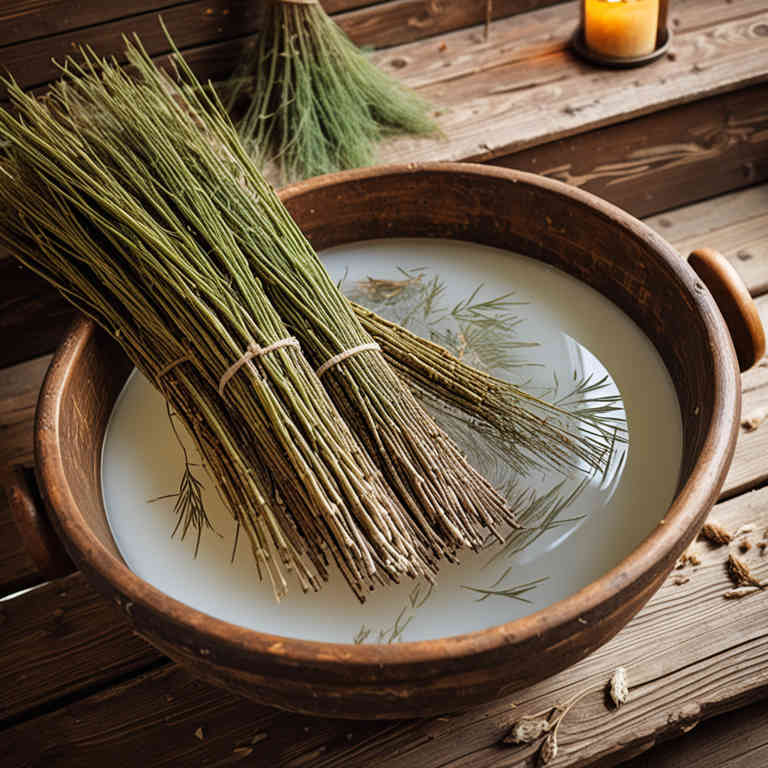
Equisetum arvense, commonly known as field horsetail, has been traditionally used in herbal baths for its high concentration of silica, which is believed to support tissue repair and reduce inflammation.
When used in warm water baths, the silica in equisetum arvense may help alleviate the symptoms of plantar fasciitis by promoting the healing of the plantar fascia. These baths are often recommended as a complementary therapy to help reduce pain and stiffness in the feet. To prepare the bath, a handful of dried equisetum arvense is steeped in hot water and then added to a basin of warm water for soaking.
While some studies suggest potential benefits, it is important to consult a healthcare professional before using herbal remedies, especially for chronic conditions like plantar fasciitis.
2. Hypericum perforatum

Hypericum perforatum, commonly known as St. John's Wort, has been traditionally used in herbal baths for its purported anti-inflammatory and analgesic properties.
When infused into warm water, the essential oils and flavonoids in St. John's Wort may help reduce inflammation and pain associated with plantar fasciitis. These baths are often recommended as a complementary therapy to support overall foot health and comfort. However, it is important to consult a healthcare provider before using St. John's Wort, as it can interact with certain medications.
Regular use of these baths may provide soothing relief and promote healing in individuals suffering from plantar fasciitis.
3. Arnica montana
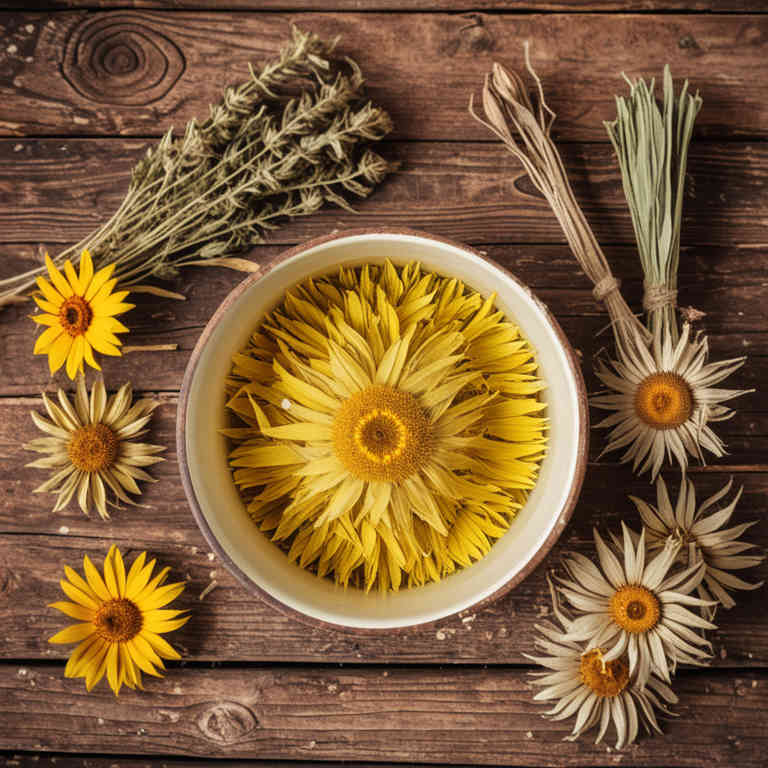
Arnica montana herbal baths have gained attention as a natural remedy for alleviating symptoms of plantar fasciitis, a common condition causing heel pain and inflammation.
When infused into warm water, arnica montana is believed to promote circulation, reduce inflammation, and ease muscle tension in the feet. The anti-inflammatory properties of arnica may help soothe the plantar fascia, offering relief from the sharp pain and stiffness often associated with the condition. To use, simply steep dried arnica flowers in hot water for 15-20 minutes, then soak the feet for 15-20 minutes daily.
While generally safe for topical use, individuals with sensitive skin or allergies should perform a patch test before incorporating arnica baths into their routine.
4. Urtica dioica

Urtica dioica, commonly known as stinging nettle, has been traditionally used in herbal baths to alleviate symptoms of plantar fasciitis due to its anti-inflammatory and analgesic properties.
When steeped in warm water, the leaves of Urtica dioica release compounds that may help reduce inflammation and soothe pain in the plantar fascia. These baths can be particularly beneficial for individuals experiencing chronic heel pain and morning stiffness associated with the condition. To prepare the bath, fresh or dried nettle leaves are boiled and then strained, allowing the water to cool to a comfortable temperature before soaking the feet.
Regular use of stinging nettle baths may offer a natural, complementary approach to managing plantar fasciitis alongside other therapeutic interventions.
5. Achillea millefolium
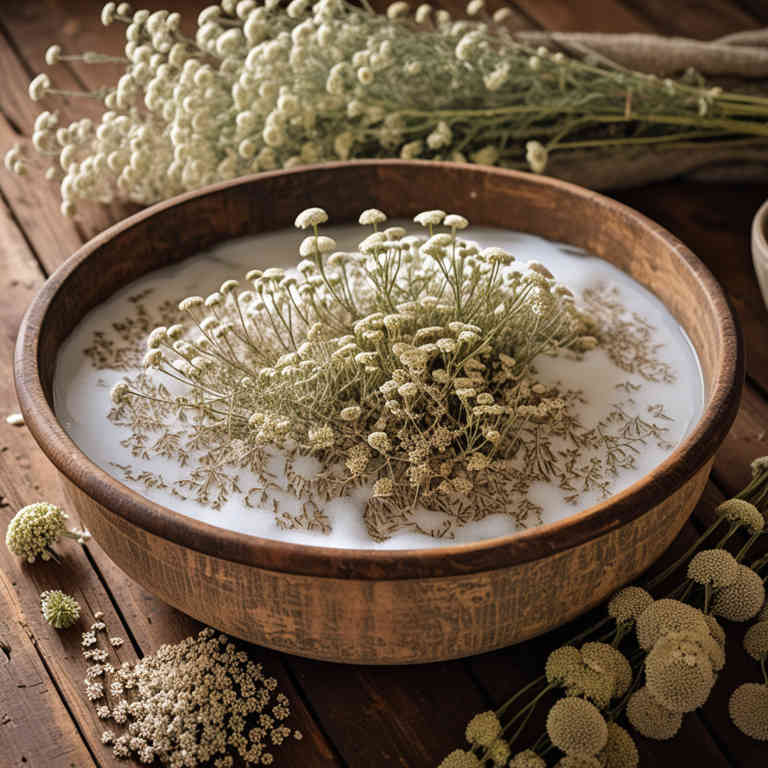
Achillea millefolium, commonly known as yarrow, has been traditionally used in herbal remedies for its anti-inflammatory and pain-relieving properties.
When infused into a warm bath, yarrow can help soothe the inflamed plantar fascia, providing relief from the sharp pain associated with plantar fasciitis. The essential oils and tannins in yarrow have been shown to reduce swelling and improve circulation, which can accelerate the healing process. To prepare an herbal bath, steep a handful of dried yarrow in boiling water for 15-20 minutes, then add the infused liquid to warm bath water.
While herbal baths may complement other treatments, they should not replace professional medical advice, especially for chronic or severe cases of plantar fasciitis.
6. Chamomilla recutita

Chamomilla recutita, commonly known as German chamomile, has been traditionally used for its soothing and anti-inflammatory properties, making it a popular choice for herbal baths aimed at alleviating symptoms of plantar fasciitis.
When infused into warm water, chamomile baths can help reduce inflammation and soothe the painful areas of the feet affected by plantar fasciitis. The essential oils in chamomile, such as bisabolol and alpha-bisabolol, are known to have calming and analgesic effects that may ease discomfort and promote relaxation. To prepare a chamomile bath, steep a handful of dried chamomile flowers in hot water for several minutes, then add the liquid to warm bath water.
Regular use of chamomilla recutita baths can be a natural and complementary approach to managing plantar fasciitis symptoms alongside other treatments.
7. Salvia officinalis

Salvia officinalis, commonly known as sage, has been traditionally used in herbal baths for its soothing and anti-inflammatory properties, which may offer relief for plantar fasciitis.
When infused into warm water, sage can help reduce inflammation and ease the pain associated with this condition. The essential oils in sage, such as thujone and camphor, are believed to stimulate blood circulation and relax the muscles in the feet. Regular use of sage-infused baths may provide a natural and gentle approach to managing symptoms of plantar fasciitis.
However, it is important to consult with a healthcare professional before incorporating herbal treatments into a pain management plan.
8. Lavandula angustifolia

Lavandula angustifolia, commonly known as English lavender, has been traditionally used for its soothing and anti-inflammatory properties, making it a popular choice for herbal baths aimed at relieving plantar fasciitis.
When infused into warm water, lavender essential oil can help reduce inflammation and pain in the plantar fascia, the thick band of tissue that runs along the bottom of the foot. The calming aroma of lavender also promotes relaxation, which can aid in reducing stress-related tension that may exacerbate foot pain. Regular use of lavender-infused baths may support overall foot health and provide a natural, non-invasive approach to managing symptoms.
However, it is advisable to consult a healthcare professional before using essential oils, especially if you have sensitive skin or existing medical conditions.
9. Cnicus benedictus
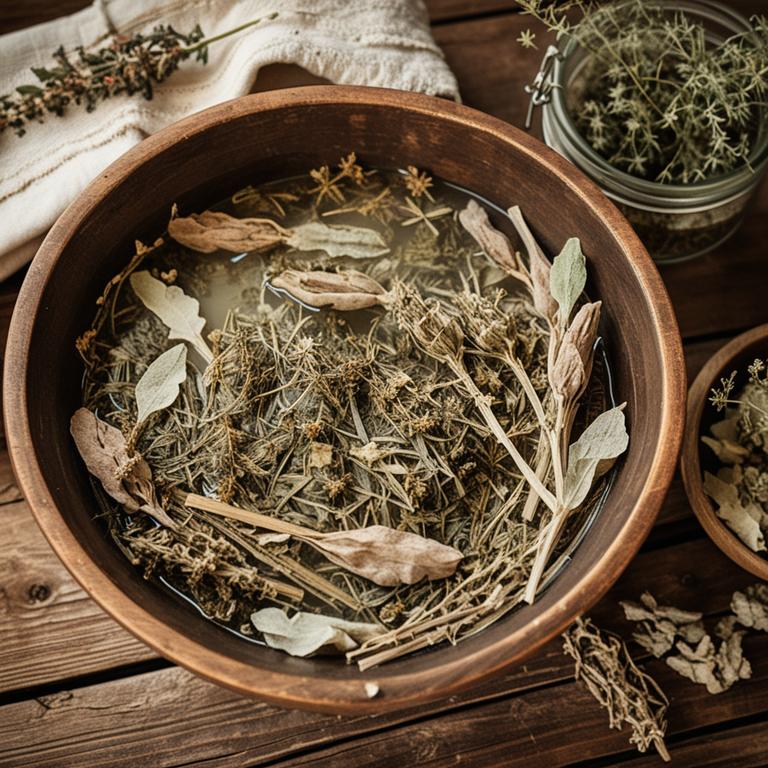
Cnicus benedictus, commonly known as the blessed knapweed, has been traditionally used in herbal baths to alleviate symptoms of plantar fasciitis.
The plant contains anti-inflammatory and analgesic compounds that may help reduce pain and swelling in the plantar fascia. To prepare the bath, a handful of dried Cnicus benedictus is boiled in water and then cooled before being used for soaking the feet. Regular use of this herbal bath is believed to promote circulation and ease stiffness in the feet.
While it is a natural remedy, it should complement, not replace, conventional treatments recommended by healthcare professionals.
10. Melissa officinalis
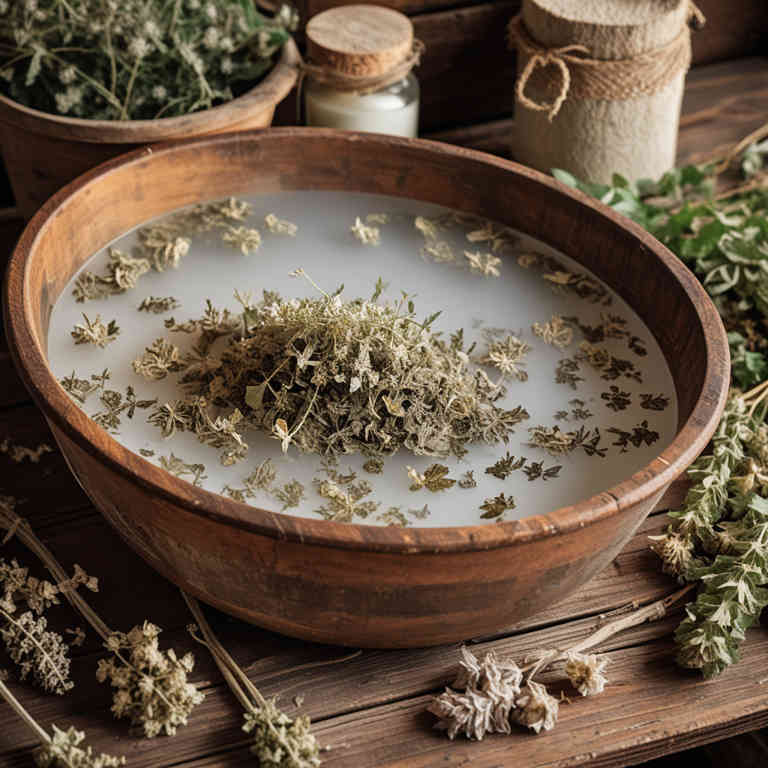
Melissa officinalis, commonly known as lemon balm, is a gentle herbal remedy that can be used in herbal baths to support the treatment of plantar fasciitis.
When infused into warm water, lemon balm's calming properties can help reduce inflammation and soothe the pain associated with this condition. The aromatic compounds in Melissa officinalis may also promote relaxation and improve circulation, aiding in the recovery process. To prepare an herbal bath, steep a handful of dried lemon balm leaves in hot water for 15-20 minutes, then add the infused water to a tub of warm water.
Regular use of this herbal bath can complement other treatments and provide a natural, soothing relief for those suffering from plantar fasciitis.